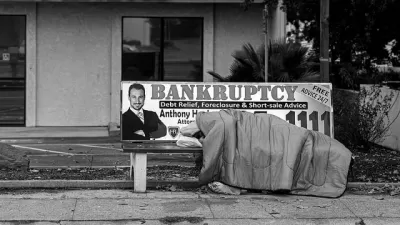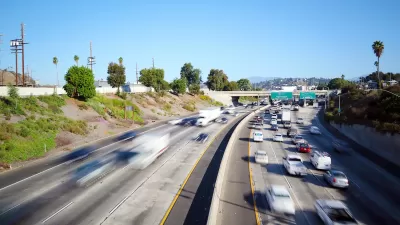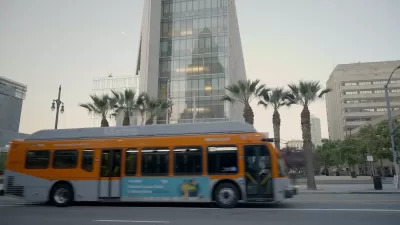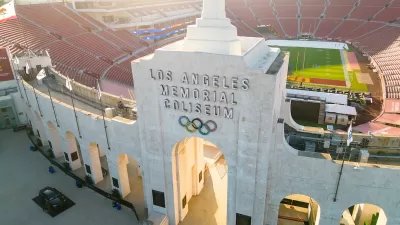Transit can be a vital resource for the homeless. In Los Angeles, where that population is growing, this is doubly true.

"For many homeless individuals living in cities, a robust public transit network is an invaluable resource, providing shelter when the shelters are full, inaccessible, or indifferent," Amelia Taylor-Hochberg writes for Curbed Los Angeles in a long-read article that details the policy response of the region's transit agency to a growing homeless population.
"The populations of chronically homeless people in both the city and county have consistently risen in the past few years," according to Taylor-Hochberg. Homeless advocates hope that, "[w]ith the constructive timing and a focus on coordinated efforts, transit agencies can deal a significant blow against homelessness," adds Taylor-Hochberg reports.
As the challenges of homelessness evolves, the Los Angeles County Metropolitan Transportation Authority (Metro) is looking for new ways to respond to the region's growing homeless population, including with the creation of a Homeless Task Force in Spring 2016. That task force is already hard at work on a new Transit Homeless Action Plan:
In October 2016, the task force received $1.2 million to create special outreach teams to respond exclusively to homelessness on Metro. These so-called C3 teams (County, City, Community), are contracted by the Department of Health Services and its subcontractor, People Assisting the Homeless (PATH), and are somewhat similar to previous efforts implemented in Skid Row. They’ll ride the system’s Red, Gold, and Green lines for a year, then report back to Metro to inform the Transit Homeless Action Plan.
FULL STORY: How Metro is responding to LA’s homelessness crisis

Trump Administration Could Effectively End Housing Voucher Program
Federal officials are eyeing major cuts to the Section 8 program that helps millions of low-income households pay rent.

Planetizen Federal Action Tracker
A weekly monitor of how Trump’s orders and actions are impacting planners and planning in America.

Ken Jennings Launches Transit Web Series
The Jeopardy champ wants you to ride public transit.

Washington Legislature Passes Rent Increase Cap
A bill that caps rent increases at 7 percent plus inflation is headed to the governor’s desk.

From Planning to Action: How LA County Is Rethinking Climate Resilience
Chief Sustainability Officer Rita Kampalath outlines the County’s shift from planning to implementation in its climate resilience efforts, emphasizing cross-departmental coordination, updated recovery strategies, and the need for flexible funding.

New Mexico Aging Department Commits to Helping Seniors Age ‘In Place’ and ‘Autonomously’ in New Draft Plan
As New Mexico’s population of seniors continues to grow, the state’s aging department is proposing expanded initiatives to help seniors maintain their autonomy while also supporting family caregivers.
Urban Design for Planners 1: Software Tools
This six-course series explores essential urban design concepts using open source software and equips planners with the tools they need to participate fully in the urban design process.
Planning for Universal Design
Learn the tools for implementing Universal Design in planning regulations.
Heyer Gruel & Associates PA
Ada County Highway District
Institute for Housing and Urban Development Studies (IHS)
City of Grandview
Harvard GSD Executive Education
Toledo-Lucas County Plan Commissions
Salt Lake City
NYU Wagner Graduate School of Public Service





























